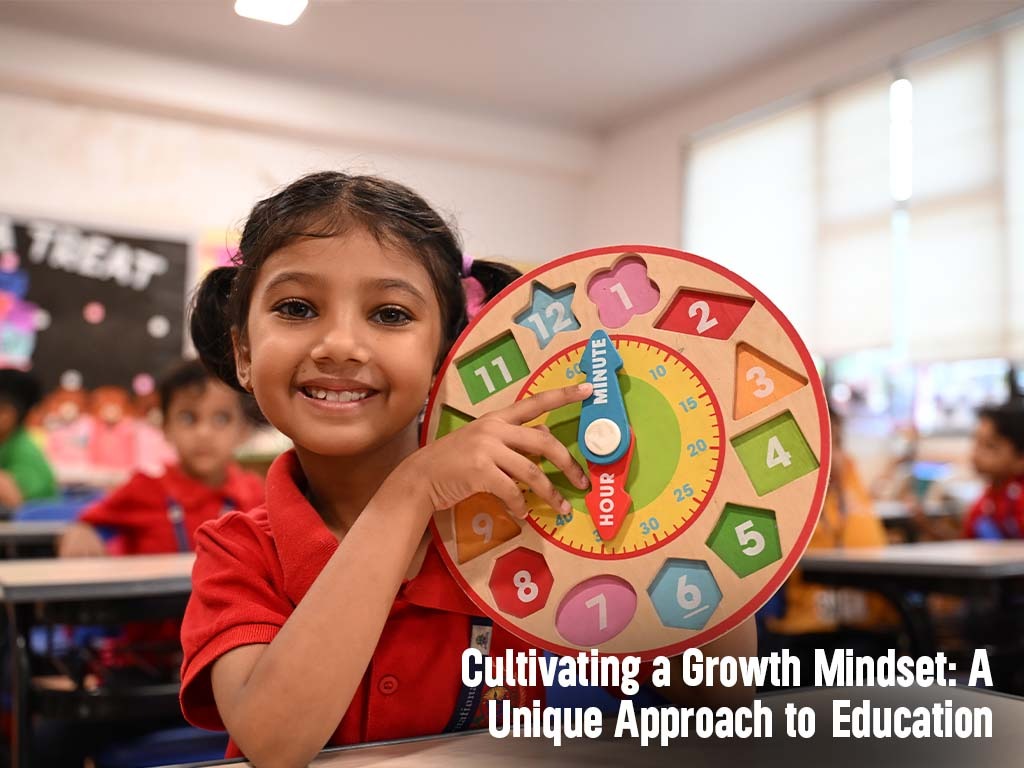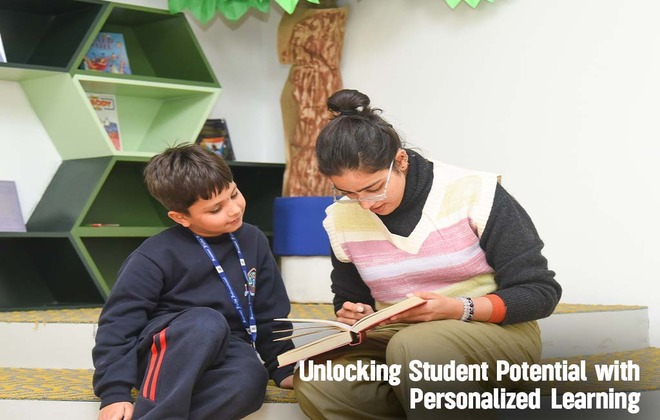Introduction:
In an ever-evolving educational landscape, fostering a growth mindset has emerged as a vital approach to student development. Unlike a fixed mindset, which views abilities as static, a growth mindset encourages students to believe that their abilities and intelligence can be developed through effort, learning, and perseverance. At Summer Fields Intl School, the Top Rated Primary Schools in NCR where this shift in thinking has profound implications for how students approach challenges, handle failures, and ultimately achieve success. Schools that emphasize a growth mindset nurture resilient, motivated learners who view challenges as opportunities for growth rather than as obstacles.
Understanding the Growth Mindset
The concept of a growth mindset was first introduced by psychologist Carol Dweck, who identified two primary ways people view their abilities: as either fixed or capable of growth. In education, this distinction plays a significant role in how students perceive their potential and approach learning. Those with a fixed mindset believe that intelligence and talent are unchangeable traits, often leading to avoidance of challenges and a fear of failure. On the other hand, students with a growth mindset embrace challenges, viewing them as opportunities to improve and learn.
The adoption of a growth mindset in schools transforms the learning environment. Instead of focusing solely on grades and performance, educators emphasize effort, improvement, and resilience. Students are taught that success is a journey rather than a destination, and setbacks are seen as stepping stones toward achieving long-term goals.
Shifting Educational Approaches: The Role of Educators
In cultivating a growth mindset, educators play a crucial role. Teachers who adopt this philosophy understand that their role is not only to impart knowledge but to inspire a love for learning. They create a classroom environment that values curiosity, exploration, and experimentation. By encouraging students to ask questions, explore new ideas, and take risks, educators help students develop confidence in their ability to learn and grow.
A key aspect of this approach is the way feedback is delivered. Instead of offering praise based on natural talent or intelligence, teachers focus on praising effort, strategy, and progress. This type of feedback reinforces the idea that abilities are not fixed and that improvement is always possible. For example, rather than saying, “You’re so smart,” a teacher might say, “You worked really hard on this project, and your effort shows.” This subtle shift in language can have a profound impact on how students view themselves and their capabilities.
Encouraging Resilience in the Face of Challenges
Resilience is one of the cornerstones of a growth mindset. Students who develop resilience are better equipped to handle setbacks and challenges, both in academics and in life. In a growth-mindset-oriented school, students are encouraged to view failures not as personal shortcomings but as opportunities to learn and improve. When a student struggles with a difficult concept, instead of feeling discouraged, they are encouraged to ask for help, try new strategies, and persist until they understand the material.
Resilience also helps students develop emotional intelligence. They learn to regulate their emotions in the face of frustration, remain optimistic in the face of difficulties, and maintain a positive attitude toward learning. These skills are critical not only for academic success but for overall personal development.
Creating a Growth-Mindset Culture: School-Wide Initiatives
The growth mindset extends beyond individual classrooms; it permeates the entire school culture. Schools that prioritize this approach implement a variety of initiatives designed to reinforce the message that abilities can be developed through effort and perseverance.
One of the ways schools do this is by embedding growth-mindset principles into their curriculum. This can take the form of dedicated time for reflection, goal setting, and discussions about personal growth. Students are encouraged to set both academic and personal goals, reflect on their progress, and make adjustments along the way. This process helps students take ownership of their learning and understand that progress takes time and effort.
Moreover, extracurricular activities, such as sports, art, and music, are used to reinforce the growth mindset. These activities provide students with additional opportunities to face challenges, make mistakes, and improve over time. Whether learning a new instrument, mastering a sport, or creating art, students experience firsthand the benefits of perseverance and dedication.
The Importance of a Growth Mindset in Early Education
The foundation for a growth mindset is often laid in the early years of a child’s education. During the primary school years, children are highly impressionable, and the attitudes they develop toward learning can have a lasting impact on their academic journey. Schools that focus on cultivating a growth mindset from an early age set the stage for lifelong learning.
In primary education, teachers often introduce growth-mindset concepts through storytelling and activities that encourage exploration and problem-solving. For instance, children may be introduced to stories of famous individuals who faced challenges and persevered to achieve success. These stories serve as powerful examples, showing young learners that success is not solely a result of natural talent but of hard work and determination.
Additionally, early education programs often emphasize social and emotional learning (SEL), which complements the growth mindset by helping children develop self-awareness, empathy, and relationship-building skills. SEL programs teach children to recognize and manage their emotions, develop a positive attitude toward learning, and build resilience in the face of challenges.
Personalized Learning: Supporting Individual Growth
Personalized learning is another critical component of fostering a growth mindset in students. By tailoring the learning experience to meet the unique needs of each student, personalized learning helps students progress at their own pace while remaining engaged and motivated.
In a growth-mindset classroom, personalized learning allows students to set their own learning goals and work toward them in ways that suit their individual learning styles. Whether through hands-on activities, collaborative projects, or independent research, students are encouraged to explore subjects in depth and take ownership of their educational journey.
This approach helps students recognize their strengths and areas for improvement, reinforcing the idea that growth is always possible. Personalized learning also provides students with opportunities to experience both success and failure, enabling them to build resilience and adaptability.
Parental Involvement: Reinforcing a Growth Mindset at Home
Parents play a vital role in reinforcing a growth mindset outside of the classroom. Schools that emphasize this approach often work closely with parents, providing resources and guidance on how to support their child’s development at home. By aligning efforts between home and school, students receive consistent messages about the importance of effort, persistence, and learning from mistakes.
Parents are encouraged to use growth-mindset language at home, focusing on effort rather than innate ability. For example, instead of saying, “You’re so good at math,” a parent might say, “I’m proud of how hard you’ve worked to understand these math problems.” This type of praise reinforces the belief that abilities can be developed over time.
Additionally, parents can help their children set goals, reflect on their progress, and celebrate small achievements. By creating a home environment that values learning and growth, parents can help their children develop the confidence and resilience needed to tackle challenges both in and out of school.
The Role of Feedback in Developing a Growth Mindset
Effective feedback is one of the most powerful tools for fostering a growth mindset in students. Constructive feedback helps students understand their strengths and areas for improvement, providing clear guidance on how to make progress. In a growth-mindset classroom, feedback is not just about pointing out mistakes; it is about offering strategies for improvement and encouraging students to try again.
Teachers who focus on growth-mindset feedback use language that emphasizes effort, strategies, and perseverance. They encourage students to view mistakes as learning opportunities and provide specific guidance on how to overcome challenges. This approach helps students develop a positive attitude toward feedback and see it as a valuable part of the learning process.
Embracing Challenges: The Path to Mastery
One of the most important aspects of a growth mindset is the willingness to embrace challenges. Students who are encouraged to step outside their comfort zones and tackle difficult tasks learn valuable lessons about perseverance and mastery. In a growth-mindset school, challenges are not something to be avoided; they are opportunities for growth.
By creating a classroom culture where challenges are viewed as positive experiences, students are more likely to take risks, try new approaches, and push themselves beyond their perceived limitations. This mindset helps students develop grit—the ability to stick with difficult tasks until they achieve mastery.
Furthermore, students who embrace challenges are more likely to develop a love for learning. They understand that learning is a lifelong process, and they are motivated to continue exploring new ideas, even when faced with obstacles.
Building a Growth Mindset Through Collaboration
Collaboration plays a significant role in fostering a growth mindset. When students work together on projects, they are exposed to different perspectives, ideas, and problem-solving strategies. Collaborative learning encourages students to learn from their peers, offer support, and share knowledge.
Group projects and collaborative activities also provide students with opportunities to practice important social and emotional skills, such as communication, empathy, and teamwork. These skills are essential for success in both academic and real-world settings, and they help students develop the resilience and adaptability needed to thrive in a rapidly changing world.
The Long-Term Benefits of a Growth Mindset
The benefits of cultivating a growth mindset extend far beyond the classroom. Students who develop this mindset are better equipped to handle the challenges of higher education, the workplace, and life in general. They understand that success is not solely determined by talent or intelligence but by effort, perseverance, and a willingness to learn from mistakes.
In the long term, a growth mindset fosters a love for learning, creativity, and innovation. It helps students develop the skills and attitudes needed to adapt to new situations, overcome obstacles, and achieve their goals. Ultimately, a growth mindset prepares students to become lifelong learners who are capable of thriving in an ever-changing world.
Conclusion:
At Summer Fields Intl School, the Top Rated Primary Schools in NCR where fostering a growth mindset represents a transformative approach to education, one that empowers students to reach their full potential. By emphasizing effort, resilience, and a love for learning, schools create an environment where students are not afraid to take risks, make mistakes, and push themselves to achieve more.
Through personalized learning, collaborative experiences, and a supportive school culture, students learn that their abilities are not fixed—they can grow, adapt, and improve with time and effort. This shift in thinking has the potential to reshape education and, more importantly, to prepare students for a future where continuous learning and growth are the keys to success.


